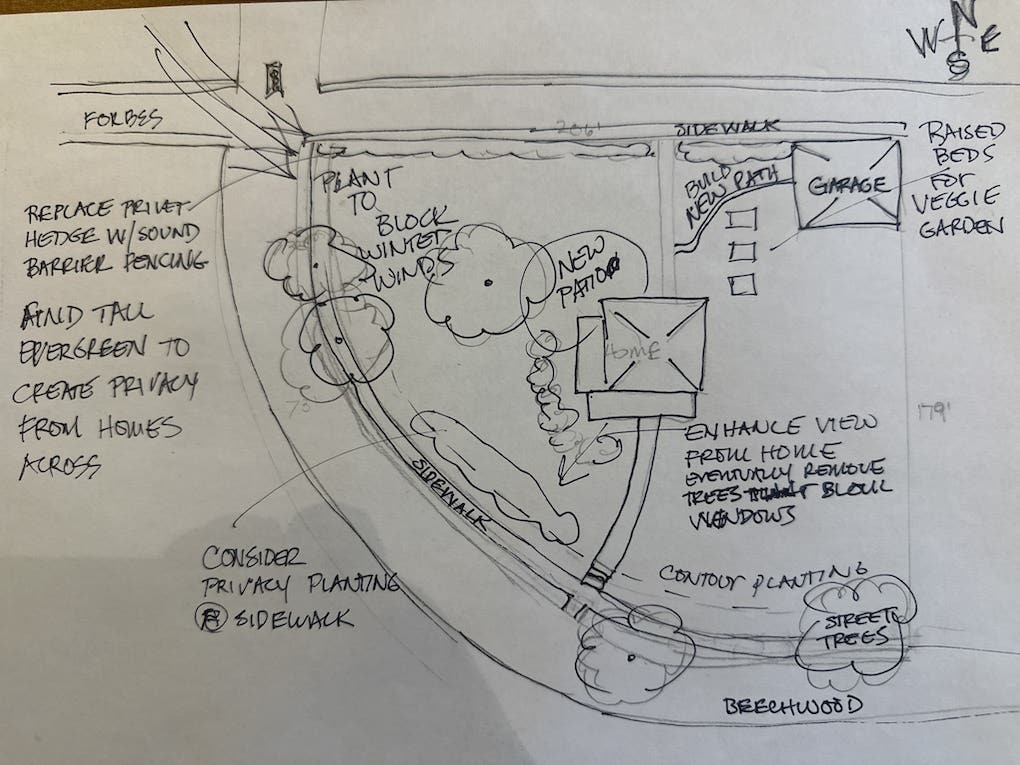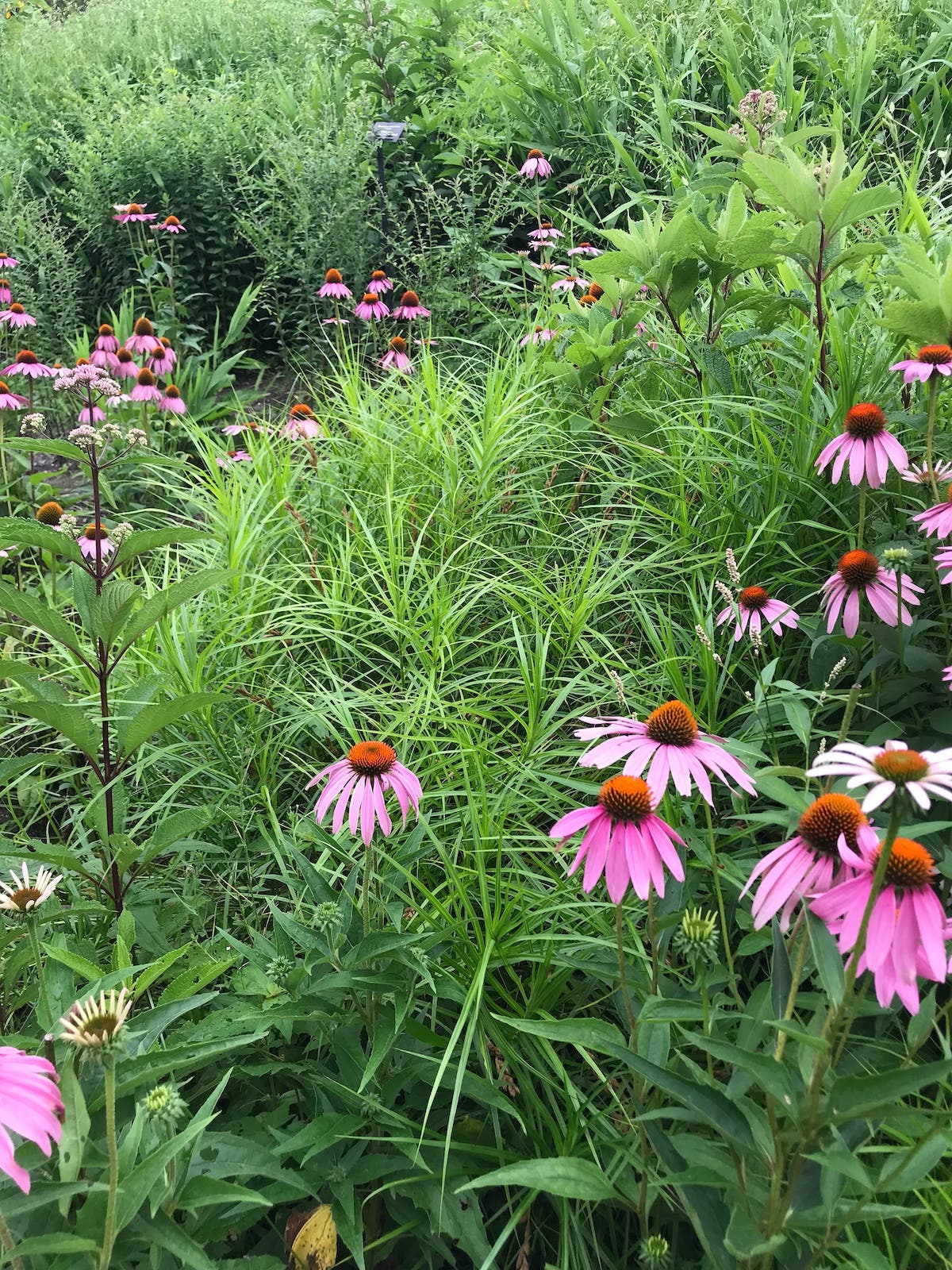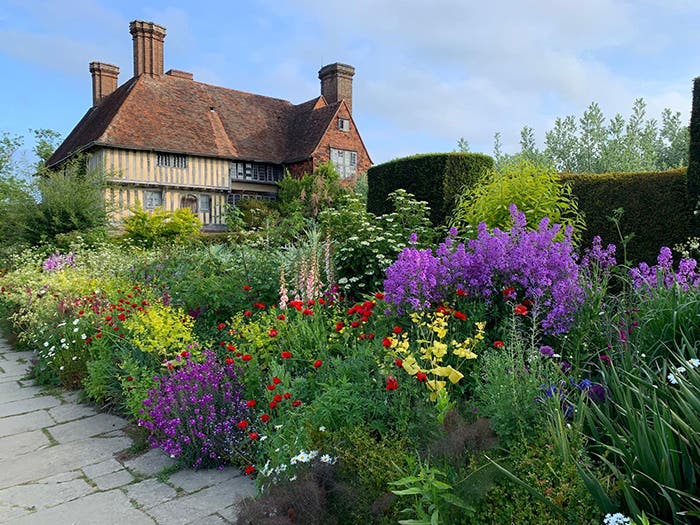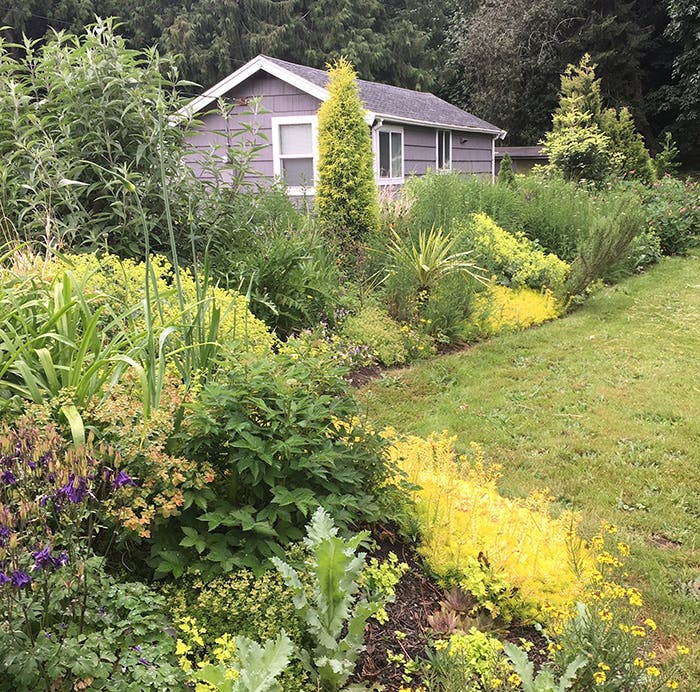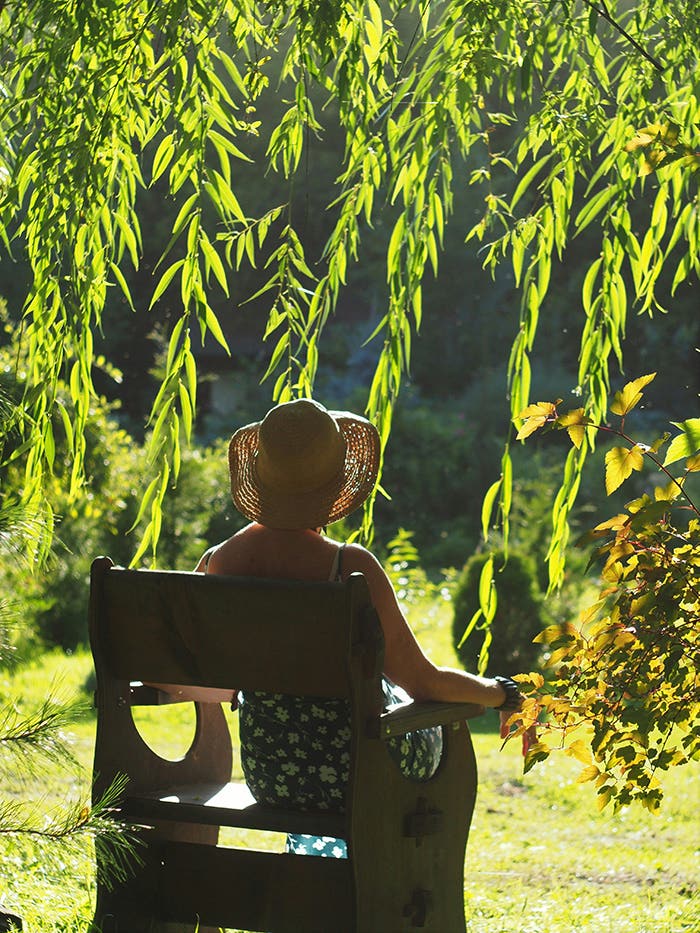Mother Nature’s designs always look so effortless. But there are rules underlying the sense of harmony we experience in wild places. One principle from Mother Nature’s design book is to divide the landscape into catchment areas—the slopes that rainwater runs off of—and conveyances—the rivers, streams and rivulets that collect that water and channel it away.
Follow any creek upstream and veer off onto smaller and smaller tributaries, and you’ll soon find yourself in a dry streambed, or what hydrologists refer to as a wet-weather conveyance. Only in a downpour do these conduct water.
There are good reasons to shape the topography around our homes in the same manner as natural landscapes. Dry streambeds, modeled after those in nature, are one practical application of this philosophy. Dry streambeds provide a way of constructively moving water from a high point to a low point. Built wisely, they can resolve issues of erosion where the slope is steep, or drainage where there is no slope. Rain gardens, which are intended to infiltrate storm-water runoff rather than simply carry it away, are a natural extension of dry streambed design.
Dry streambeds also make a pretty focal point in the home landscape. As drainage features go, they are certainly more interesting than a buried drainpipe, and they are infinitely nicer to look at than a drainage ditch. Naturally occurring dry streambeds always contain rocks that have been exposed by the rushing water. They also contain unique plant communities, including ferns, reeds, sedges and moisture-loving shrubs and trees like willow and elderberry, which help to hold the remaining soil in place. Wetland flowers that do not require permanently saturated soil, such as cardinal flower (Lobelia cardinalis), provide an option for adding spots of color. All of these charming details can be replicated in a dry streambed constructed for the home garden.
Siting a Dry Streambed
It takes some imagination and a bit of technical precision to get from the artificially graded topography found around most homes to the undulating hills and dales of a watershed. The importance of siting in achieving this aesthetic in a dry streambed installation can’t be overstated.
We rarely think of it as such, but every yard is in fact a mini watershed. The high peaks and ridges of this watershed are the rooflines of your home. Gutters are, in effect, tiny dry streambeds on the sides of your home. The base of a downspout, or anywhere that water already collects in the landscape, is a logical place to site the top of a dry streambed. A curbside culvert, natural waterway or other low point at the edge of your property is a logical place to end it. The route between the two should never be a straight line. Find a way for the watercourse to meander a little bit. Otherwise, it’s a ditch.
All that said, it may not be practical to start and end a dry streambed feature at the obvious high and low points on your property. It’s often necessary to collect water from downspouts, French drains and other existing drainage features in a corrugated drain pipe, which can then be routed underground to the location of the dry streambed. You might join several such pipes together into a larger one that “daylights” at your chosen location. Just make sure there is at least a slight slope between point A and point B (a quarter-inch drop for every lineal foot of pipe is the minimum). If needed, use buried drain pipe again to convey water from the bottom of the dry streambed to its destination at the edge of your property.
If you happen to have an area where two downhill slopes meet each other in a tiny valley—voilà, you’ve found the perfect site for your dry streambed. That’s exactly where Mother Nature puts hers. More likely is that you’ll be working with a relatively flat site, or a smoothly graded (non-undulating, that is) slope with no obvious route where rainwater drains away. In this case, take a closer look: If you walk back and forth across the area a few times, you’ll likely begin to notice a series of slight dips where the water wants to run. Feel free to put on your galoshes and do this in a heavy downpour so you can watch the rivulets form. On flattish sites, a four-foot carpenter’s level can help you see where the low points are, if it’s not obvious from puddles forming after a rain. For large-scale dry streambed installations, contractors may use a laser level to plot out the path.
The point of this exercise is not only to site your dry streambed in a location that harnesses gravity to move storm water runoff through the landscape, but to do so in a way that looks and feels natural, as if water has always been flowing there. You certainly wouldn’t want to route a dry streambed along a “ridge,” for example—which, at the scale of the home landscape, might translate as a berm—nor will you want it cutting a diagonal line across a slope. It should meander down the slope instead. And naturally, you don’t want another large landscape feature, like a driveway, bisecting the dry streambed. It is quite quaint to use an arched wooden bridge if you need to route a garden path across the path of the water, however.
Sculpting the Topography
Given the graded-by-bulldozer topography of most home landscapes, you’ll almost certainly need to sculpt the earth a bit to get a natural-looking water feature. First, plot the meandering centerline of the streambed with flags or stakes. Then, excavate along this path, piling the soil on either side to accentuate the valley and stream effect. The width of the streambed should vary considerably, from wide “pools” to narrow “ravines.” Small installations can be done with a shovel; larger installations may require earth-moving equipment.
The piles of excavated soil will become planting areas; how you grade them is an opportunity for creative design. If you want, excavate deeper in the wide spots to cause the water to literally pool up—these can be filled with gravel later, serving as mini-rain gardens within the streambed. Use most of the excavated soil to create taller planting berms on either side of the narrow spots, leaving the grade relatively flat adjacent to the wide areas, as if these were broad sandbars or floodplains. Getting the topography right makes it easy to do the stonework and devise an effective planting scheme.
Fine-Tuning the Design
After grading is complete, lay heavy-duty landscape fabric along the length of the excavated area to prevent weeds from taking over later (they’re very hard to pull when growing between large rocks). Place larger stones along the edges, with an occasional “boulder” midstream. Fill in the spaces with stones of various sizes, working your way from larger to smaller rocks. Then, fill in the spaces between the rocks with pebbles. You can create “washes” with small pebbles or fine gravel in some of the wide spots, though make sure to use larger flat stones to line narrow spots, as small pebbles will wash away in the rushing water that occasionally pulses through these segments of a dry streambed. The key is to place stones in a way that appears ordered, yet random—you would never find rows of similar-size rocks in a natural streambed, for example.
When it comes to selecting materials, go with what fits the surrounding landscape, both in the broader sense (desert versus hardwood forest), and at the microcosm of your yard (xeriscape versus cottage garden). Smooth river stones are always a nice choice, but rougher (and cheaper) “field stones” are also effective, especially in Western regions where they look right at home.
The same goes with the plant palette. You will need species that appreciate moisture, yet can withstand periods of dry soil, unless you plan to irrigate. Position riparian trees, shrubs and perennials on the raised berms you’ve created along the edges of the streambed, with reeds and sedges placed here and there as accents among the rocks. But take a minimalist approach with the plantings—the idea of a dry streambed is to celebrate the dynamic relationship between water and stone.
Image credits, top to bottom: Glenn Fleishman/CC BY 2.0; iStock


